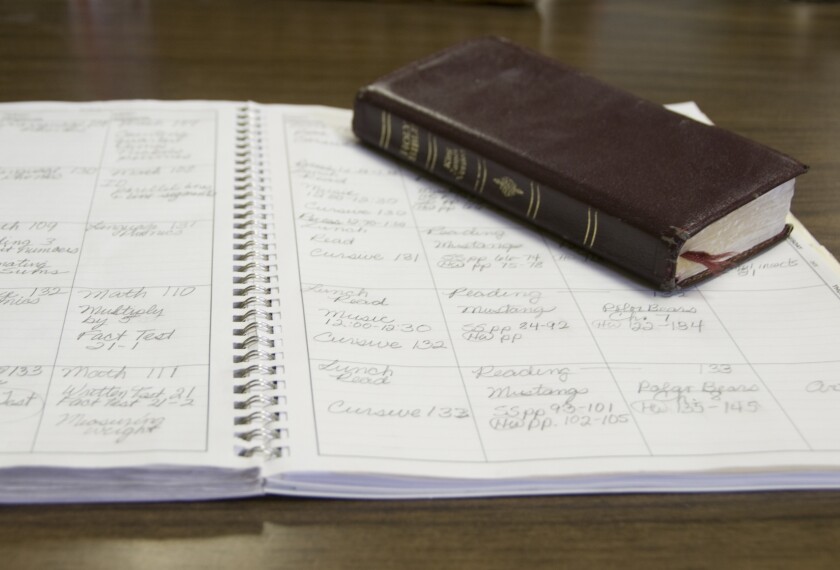Right before the start of Pride Month, I sat down at a global conference and happened to meet an open-licensing expert interested in LGBTQ-inclusive educational resources—my exact work. Eager to exchange ideas and resources, my fellow conference attendee asked me if I’d heard of GLSEN’s educator materials. I had. Or the resources from Gender Spectrum, or Teaching Tolerance, or A Queer Endeavor? I had heard of them all. Two people from two different sectors in two different countries, we had few resources left to share beyond this short but detailed list.
Meanwhile, when you ask a teacher in a U.S. classroom if they know of any of these resources, the answer will almost always be a no. This conversation, nearly identical to all others I’ve had about supporting queer students, underscores the real reason we still don’t see LGBTQ representation in instructional materials: All our focus is on creating resources, and almost no attention is on actually getting those resources into the hands of teachers and students.
When prompted to think about lesbian, gay, bisexual, transgender, and queer students, most people typically think about bathroom laws and bullying rates. In reality, these students’ needs and challenges go far beyond basic safety. We know students must be able to see themselves represented in the curriculum and respected in the classroom to be fully engaged and validated in school. One of the most salient ways to offer this type of support is through LGBTQ-inclusive instructional materials and teacher professional learning. In response to a once-total dearth of inclusive resources, many organizations have created useful and necessary resources for teachers and students.
Making queer inclusivity a priority will take much more than simply creating lesson plans.
Coupled with moves in some states to advance curriculum standards, these efforts have been successful by many measures. There are far more instructional materials, educator resources, and inclusive children’s books available to schools than there were even 10 years ago. Furthermore, California and New Jersey have passed laws to implement LGBTQ-inclusive curricula, while Utah and Arizona have repealed anti-LGBT education laws that forbid schools from “promoting homosexuality.”
To be sure, LGBTQ-inclusive teaching and learning can only happen in states where it is legal and where educators have access to quality materials. But the biggest challenge for many states goes beyond just paving the way for inclusivity—we must intentionally create it.
While there remain a handful of states where it is still illegal to discuss LGBTQ identities and issues in the classroom, many schools and districts around the country are eager to better serve their queer students. They just don’t know how. Many educators and school leaders don’t know where to find existing resources or how to implement them. This can be a formidable challenge for teachers who are not queer themselves and have not before openly engaged with topics of sexual and gender minorities. Even with a how-to guide, these teachers may not know how to talk to students about these topics.
What’s more, copyright law can prevent teachers from sharing materials—even when they’re free—with other schools or classrooms. Using all of the tools we have available, such as open educational resources and repositories, could help get the excellent resources that exist into the hands of teachers and allow willing educators to create content themselves.
For school leaders who aren’t already eager to jump on the diversity and inclusion bandwagon, making queer inclusivity a priority will take much more than simply creating lesson plans. It will take difficult, ongoing conversations between schools and supporters of LGBTQ-inclusive curriculum. It will take their careful articulation of what queer inclusivity is, why it matters for all students, and what the ramifications are of not creating inclusive classrooms.
It may even take more-robust data on the outcomes of these types of materials on student social-emotional learning, engagement, and test scores. These types of data are as severely lacking as they are needed. Though storytelling has historically been and remains a cornerstone of the queer community, it may not be enough to sell this idea to those resisting LGBTQ inclusion.
At the same time, intentional LGBTQ inclusion will require tearing down the misconceptions around what it means to support queer students. While one could reasonably consider opposing efforts by religious groups as the top priority for protecting LGBTQ rights, supporting queer students means more than teaching about the gay civil rights movement. Anyone who’s ever engaged with queer students, particularly young students, knows that it requires language awareness and respect. It does not mean, as some critics contend, derailing lessons with topically inappropriate conversation and indoctrination. Schools leaders, educators, and students can be intentionally inclusive in everyday interactions—an approach that benefits all students. Resources exist to help schools address all of this and more, including the ones referenced above.
I am not suggesting that we should shift focus entirely from creating inclusive content to measuring its outcomes. Rather, we ought to talk to each other more. Content creators, schools, and students need to have a dialogue around using the important resources that exist. To advance queer inclusivity in schools, we need to get these resources into the hands of teachers who are willing and prepared to use them.
Education folks aren’t the only ones interested in this work. Advocacy, policy, nonprofit, private, and public-sector folks share a similar hunger for more support for LGBTQ students. Until we start sharing practices, lessons, and other pieces of the puzzle across these spaces, we will not be able to identify gaps in our knowledge and truly work to serve queer students.





